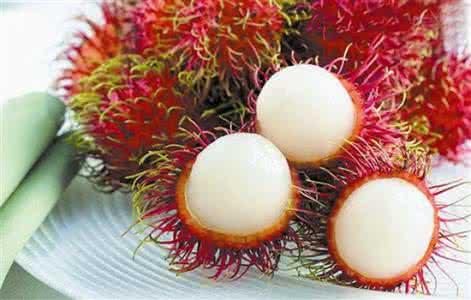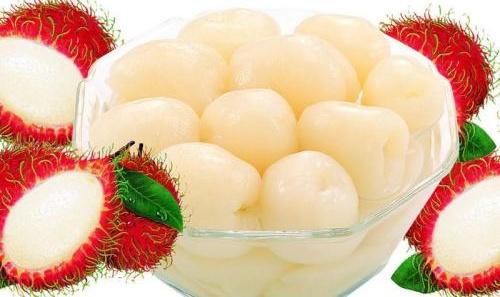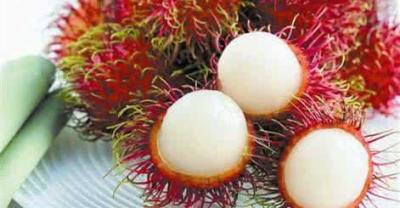How much do you know about the planting technology of rambutan
Rambutan is a large tropical fruit tree native to Southeast Asia. Mature rambutans are both red and yellow, and some are similar in size to sesame seeds. Rambutan, which tastes similar to litchi, has less planting area in China and is currently distributed in Baoting and Sanya on Hainan Island.
Rambutan likes high temperature and humidity, so it is most suitable for planting in areas where there is no wind damage and low altitude. The average annual temperature of rambutan is more than 24 ℃, and the temperature of the coldest month is higher than 17 ℃. Rambutan seedlings are not tolerant to drought and need proper increase of water and fertilizer. Like to grow in the tropics.

Rambutan sand bed sowing and budding
The cultivation of rambutan rootstock seedlings can be divided into two stages: budding and nursery bed cultivation. First sprouting, and then transplanting to the seedbed, the growth is fast and neat, this method is widely used in production.
Seed selection: at this time, rambutan harvested the first batch of red ripe fruit, and the seeds left after eating the pulp were used to sow seeds. The first batch of fruits had good quality, the most adequate nutrition and high seed quality. Seeds are also screened to get rid of those that are not full and spotted, because they cannot germinate or have a low germination rate.
Seed washing: wash the seeds after seed selection, that is, scrub the sugar on the seeds manually in clean water. The pulp that remains on the seed must be rubbed off and generally scrubbed with water for 2-3 times.
Make a sand bed: the sand bed is built on the land in front and behind the house, and it is better to have shade. Coarse river sand should be chosen because it is conducive to sprouting. The size of the sand bed depends on the number of budding seeds. The direction of the seedbed is determined according to the topography, which is suitable for drainage. If the groundwater level is high, it is necessary to raise a high ridge to avoid rotten seeds. After leveling the sand bed, you can sow seeds.
Germination: seed germination can be carried out on both sunny and rainy days. The bud eyes are facing down, put them on the sand bed and press them tightly. In this way, it is convenient to sprout and sprout quickly. After sowing, spread a layer of 2 cm thick noodle sand on it to keep moisture and warm up. The sunshade net is covered with flour sand to avoid strong light, which can moisturize and facilitate seed germination. Drench once through the sunshade net, this time drenching the sand bed.
Sand bed management: budding time is about 15-20 days. During this period, always keep the sand bed moist, too dry and wet is not conducive to germination, sunny days, 1-2 times a day, once in the morning and once in the evening. The moisture shall prevail. Pay attention to drainage on rainy days to avoid rotten seeds. The germ germinated about 5 days after sowing. After 10 days, there will be some small weeds on the sand bed that need to be pulled up manually.

Water and fertilizer management of rambutan
The water and fertilizer management of rambutan rootstock seedlings should pay attention to the following points:
In the first month after transplanting buds, water should be drenched regularly once a day, in order to be moist, and water should be drenched when the soil is dry.
In the second month, the seedling pulled out the first new leaf, weeded the nutrition bag and loosened the soil between the rows. Prevent root damage when weeding. Water and fertilizer are applied thinly once a month. Add potassium sulfate compound fertilizer with a ratio of nitrogen, phosphorus and potassium at 15:15:15. The seedlings were diluted to 10 times of water.
See that the leaves are growing vigorously, from the end of the second month, urea is applied once a month, using point application, 4-6 grains per nutrition bag.
From the third month to the fifth month, the rootstock seedlings grew to 50-70 cm tall. The weeds in the rows also grow fast, so pay attention to weeding. The amount of potassium sulfate compound fertilizer and water fertilizer was increased to 15-20 kg per mu of seedling field.
- Prev

Planting method of potted watermelon
Recently, Chen Sicheng's cheating news has occupied the screen in the past few days. I was optimistic about his film and television development, but now everything seems to be so difficult.
- Next

Cultivation Methods of Several Chinese Herbal Medicine
Dry pinellia ternata selected land preparation dry pinellia ternata cold-resistant, loose fertile sandy or semi-sandy soil for the best, general soil can also be. 100~150 kg of phosphorus and potassium fertilizer per mu before ploughing.
Related
- Fuxing push coffee new agricultural production and marketing class: lack of small-scale processing plants
- Jujube rice field leisure farm deep ploughing Yilan for five years to create a space for organic food and play
- Nongyu Farm-A trial of organic papaya for brave women with advanced technology
- Four points for attention in the prevention and control of diseases and insect pests of edible fungi
- How to add nutrient solution to Edible Fungi
- Is there any good way to control edible fungus mites?
- Open Inoculation Technology of Edible Fungi
- Is there any clever way to use fertilizer for edible fungus in winter?
- What agents are used to kill the pathogens of edible fungi in the mushroom shed?
- Rapid drying of Edible Fungi

